Minoan Pottery
The Minoan civilization was a Bronze Age culture situated on the island of Crete in the period of 3000 - 1100 BCE.

The Bronze Age Minoan civilization was centered on the island of Crete, the largest and southernmost island in the Aegean Sea, encompassing the vast period of 3000 – 1100 BCE, a remarkable span of 2100 years.
For temporal reference, the Trojan War occurred approximately 1200 BCE, near the end of the Minoan period, and 800 years before the more familiar Classical period of Athenian Greece.
Among their many famous and varied accomplishments, the Minoans were excellent potters. I enjoy emulating their forms.
A small sample of pieces that inspire me from the Heraklion Archeology Museum are presented below.
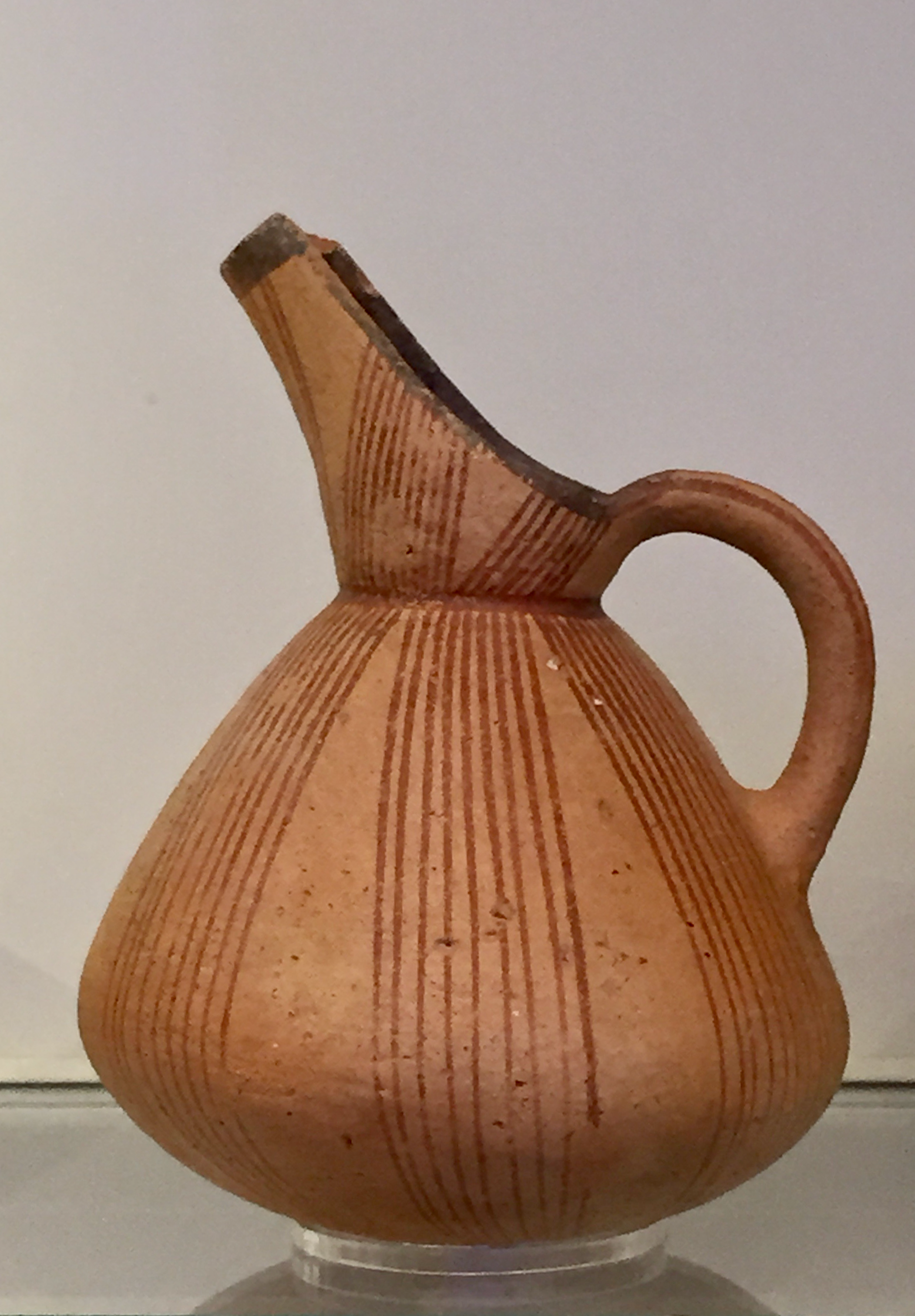
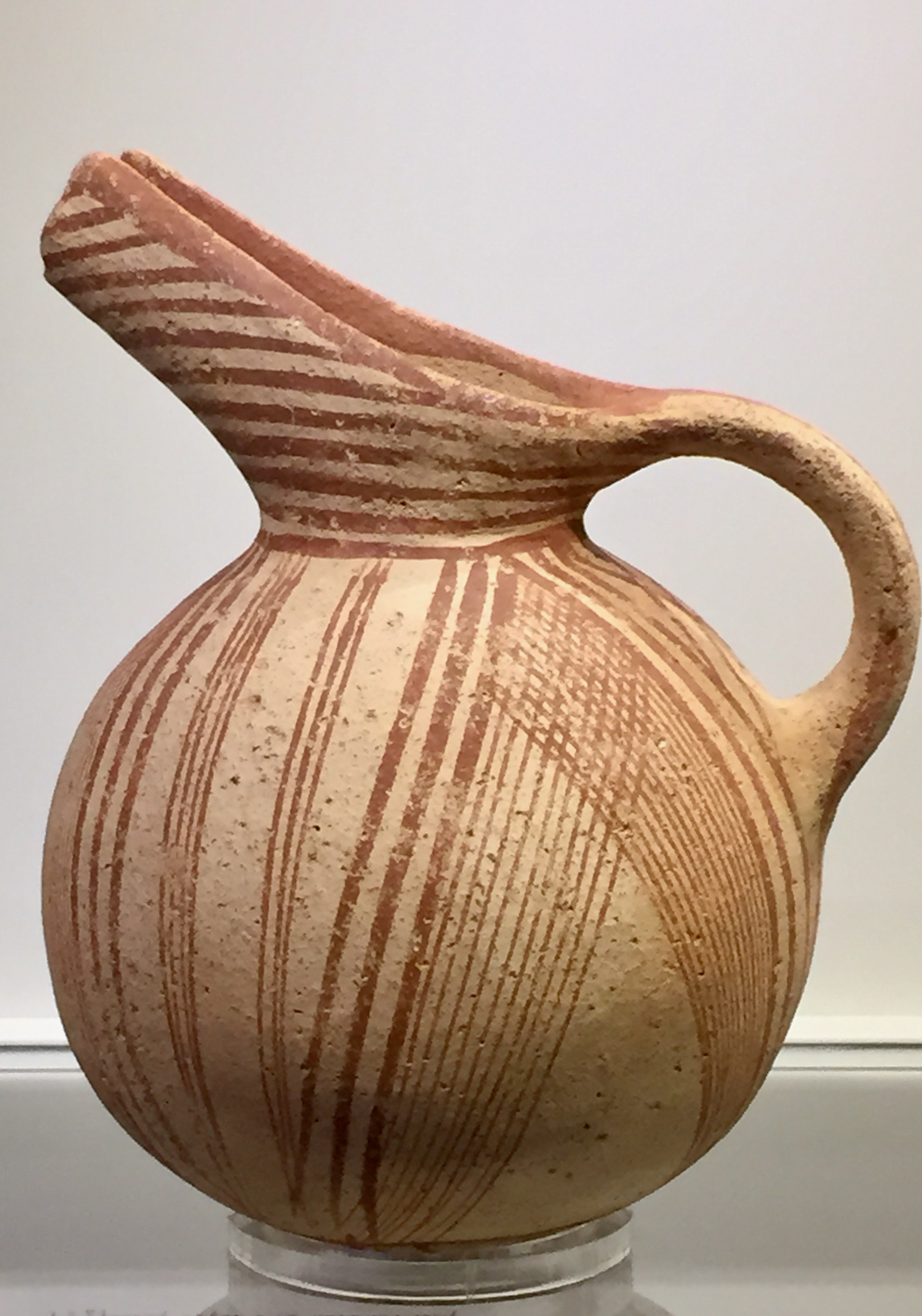
Aghios Onoyphrios Jugs, Early Minoan I, 3100-2700 BCE, From the Heraklion Archaeological Museum, Photos by Jess Taylor.
The Aghios Onoyphrios Ware jugs (above), were found in burial sites at the archeological site of the same name. Dated to the Pre-Palacial, Early Minoan I period, 3100 - 2700 BCE, they represent a brand new form of pottery that is unique to the Minoans.
The pieces were painted almost entirely in a near-white slip on a pale firing clay. Linear lines of iron-based slip were delicately painted, and when fired in oxidation, turned red. The white slip, having no iron content, retained its color. It’s been suggested the forms are inspired by the shapes of gourds and the linear lines are abstractions of strings or nets used for suspension
The renowned expert of Minoan pottery, Philip Betancourt reports, this is the period where
"the ceramicist has graduated to a position of special craftworker ... and in many ways is a high point in our artistic heritage".
Only hand building methods were available to the potter during the Early Minoan period, 3100 - 2700 BCE. By approximately 1900 BCE, the pottery wheel became available.
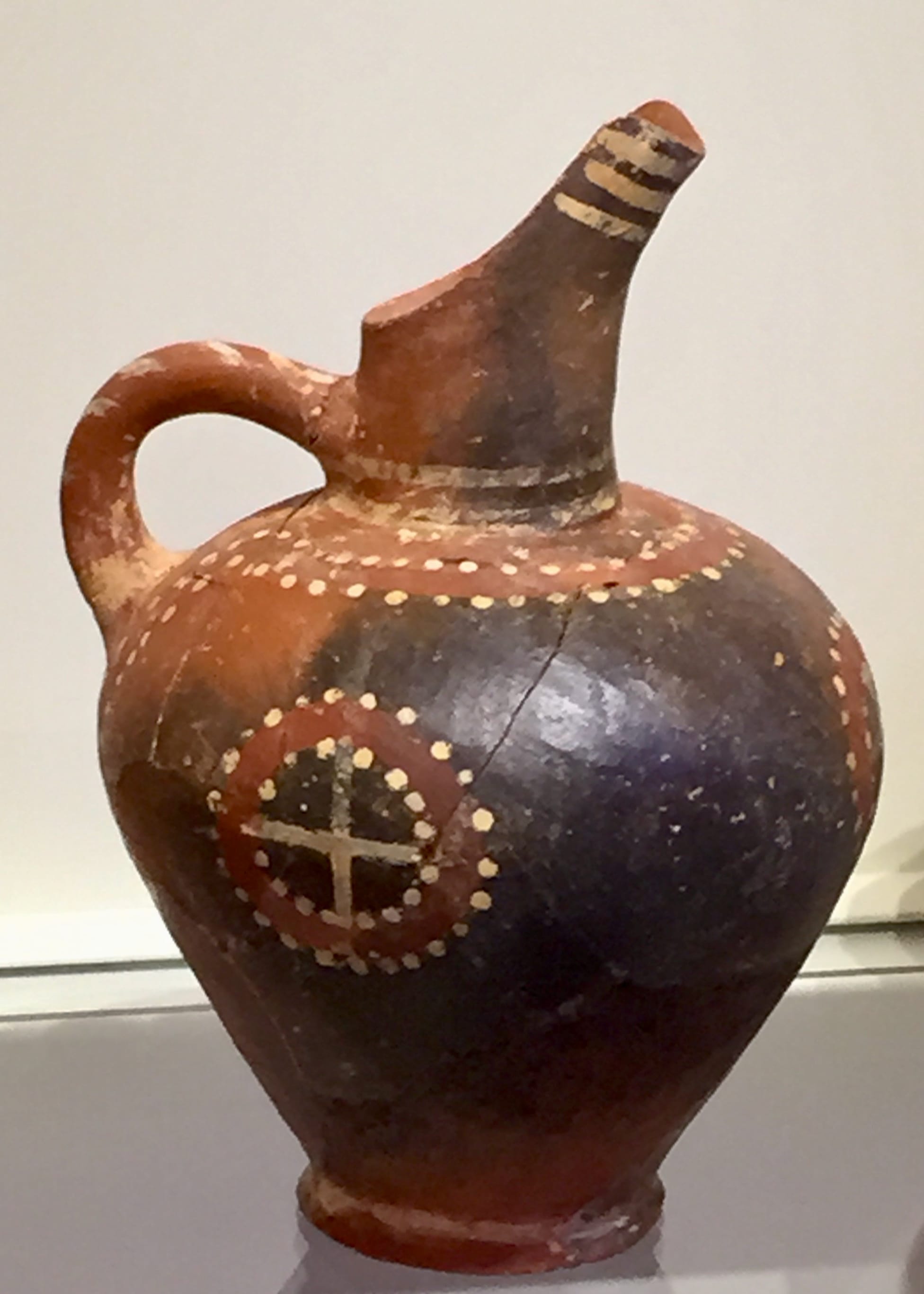
The Red on White-On-Dark Ware jug above, found at the palace of Knossos, dates from the Middle Minoan IA period, 2200-1700 BCE. It shows the introduction of polychromy, with the addition of Red paint on White-on-Dark ware, and the characteristic Minoan spout and handle. It was during the Middle Minoan IA period that the potters wheel came into full use (1900 BCE).
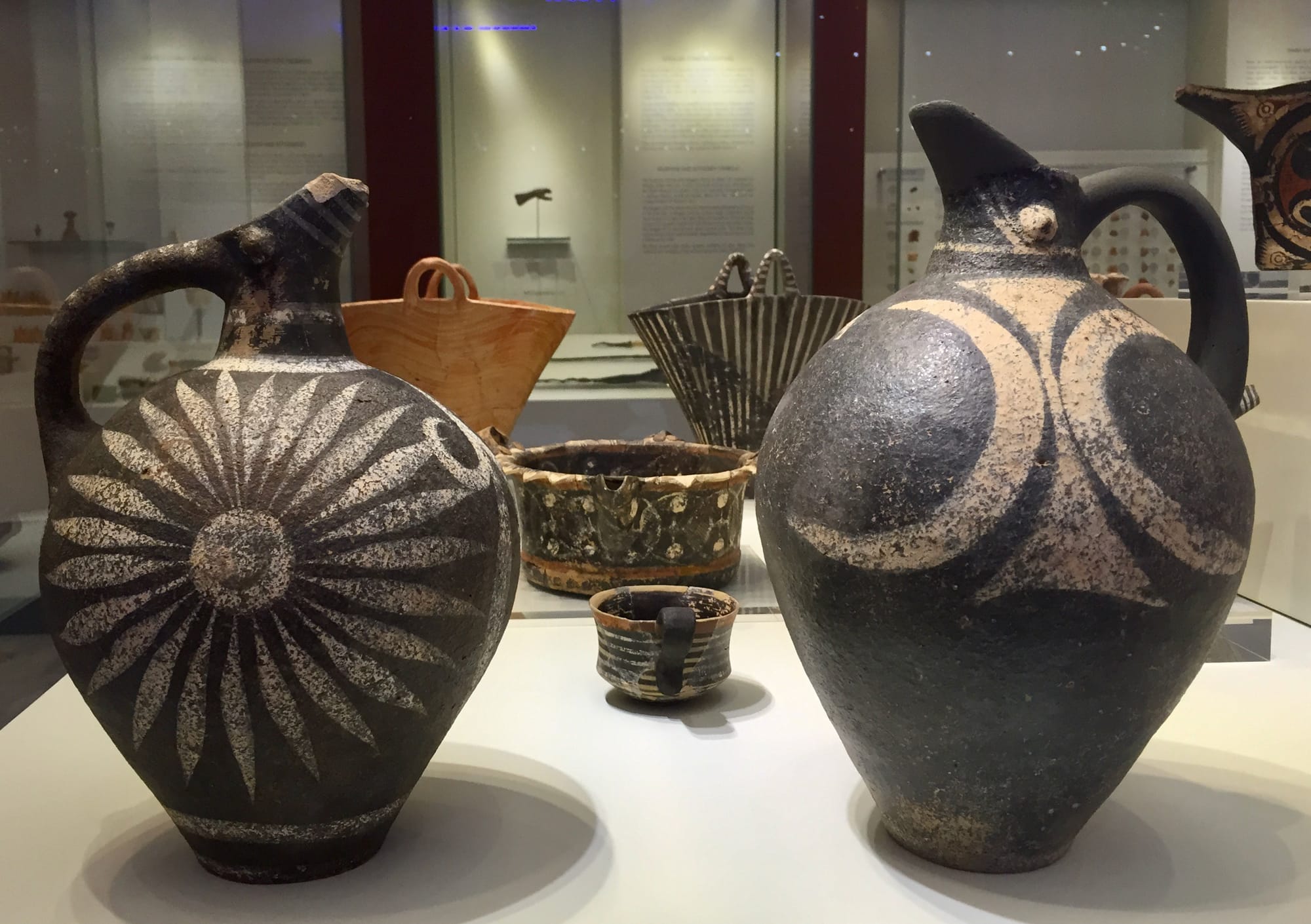
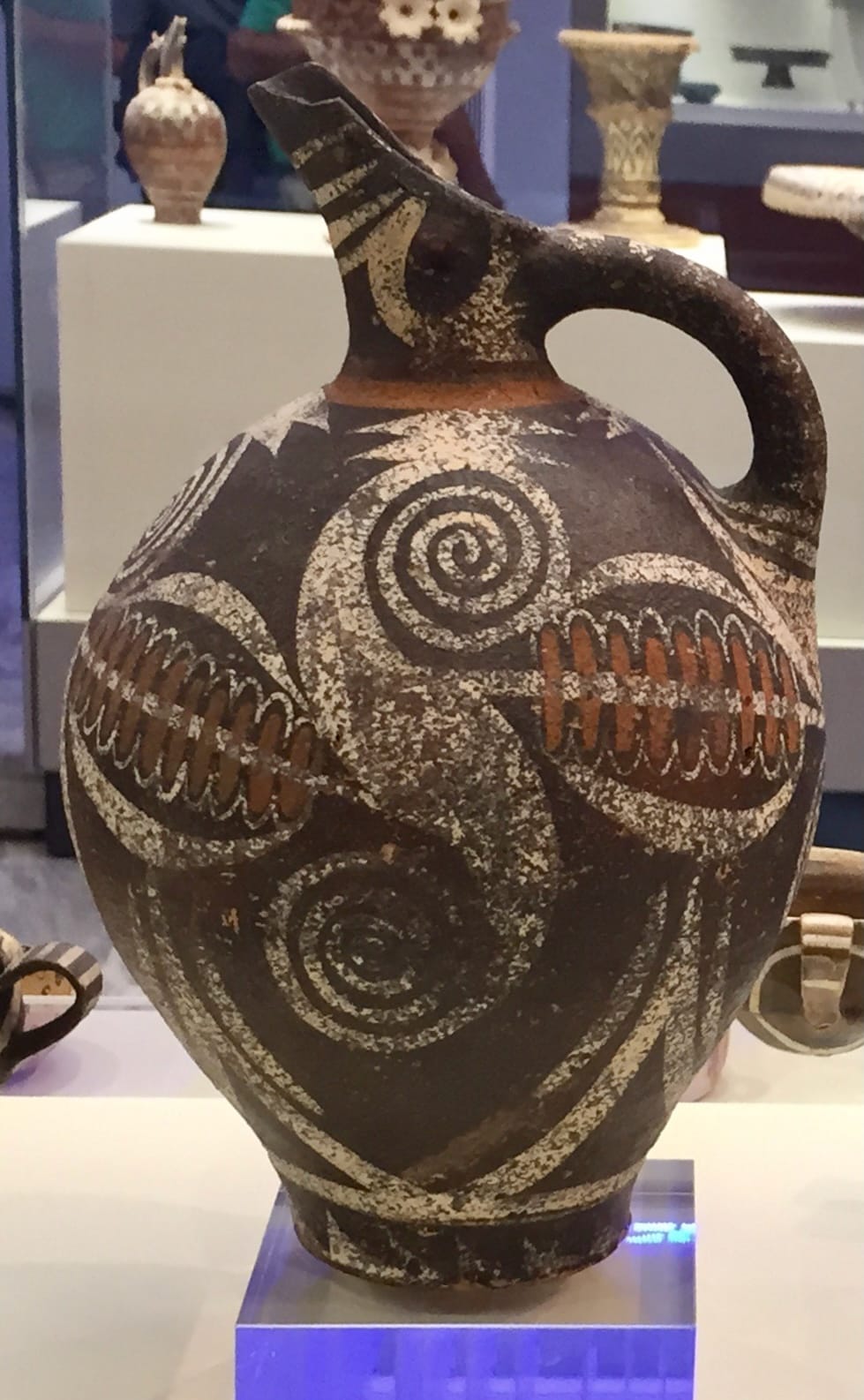
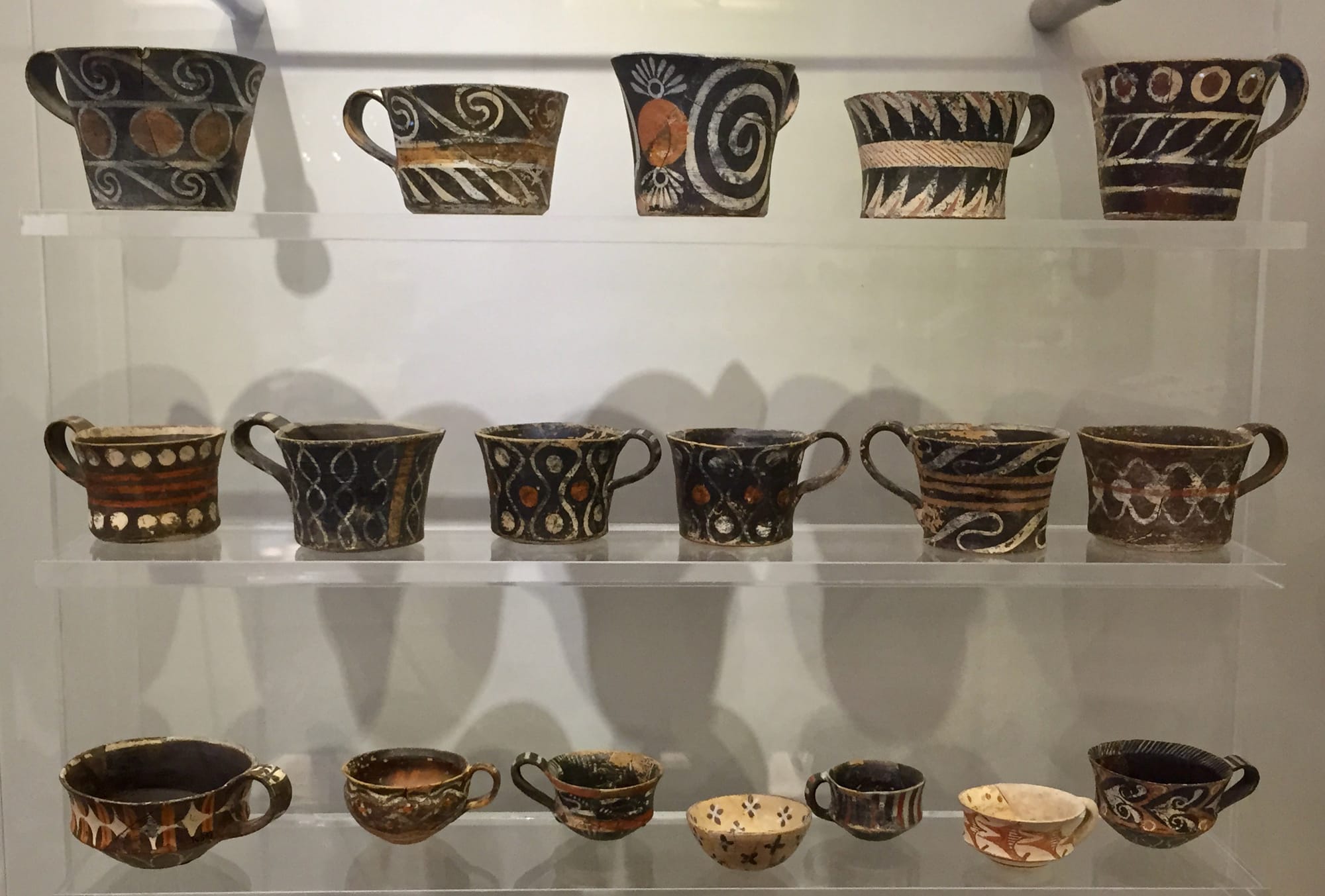
Left and Center, Jugs, Middle Minoan IIB, 1750-1700 BCE. Right, Cups, Middle Minoan IIB, 1750-1700 BCE. From the Heraklion Archaeological Museum, Heraklion, Crete. Photos by Jess Taylor.
The wheel-thrown pottery presented in the gallery above is known as Kamares Ware, from the Middle Minoan IIB, 1750-1700 BCE, and was produced in the palace ceramic studios. They are considered to be the artistic zenith of Minoan pottery. Almost every piece is unique. The cups look like they could be modern!
Betancourt calls this ware
“major monuments in the history of ceramic art”.
If you find yourself on Crete, be sure to visit the Heraklion Archeology Museum!
Minoan Kilns
Throughout the entire Minoan Period, pottery was fired at earthenware or terracotta temperatures, employing slips rather than ceramic glazes. Firing was performed once in cross-draft, wood stoked kilns that could be manipulated to create oxidized and non-oxidized (reduction) environments.
The technical advancement of cross-draft kilns from the Final Neolithic pit-kilns was the separation of heat source (wood fire) from the pottery zone, drawing heat from the fire chamber to the pottery chamber and out through a flew. This allowed for hotter firing temperatures, due to improved heat retention, and improved atmospheric control. Pit-kilns were smaller, single chambered, with no drafting capabilities, and with the heating material being in proximity to the pottery.
Minoan cross-draft kilns are divided into two classes, Type I and Type II. Type I kilns were smaller than Type II. Type 1 are round or pear shape and half sunken into the ground. The advanced Type II kilns are called Channel kilns. They are larger, rectangular or horseshoe-shaped and possess multiple U-shaped channels from which heat was drawn into.
In total 51 Minoan Type I and II kilns from 20 settlement sites have been identified on Crete thus far.
An example of a Type II kiln from the Minoan Palace of Zakros, located on the eastern shoreline of Crete, and dated Middle Minoan III or Late Minoan IA (1750 – 1625 BCE) is shown below.
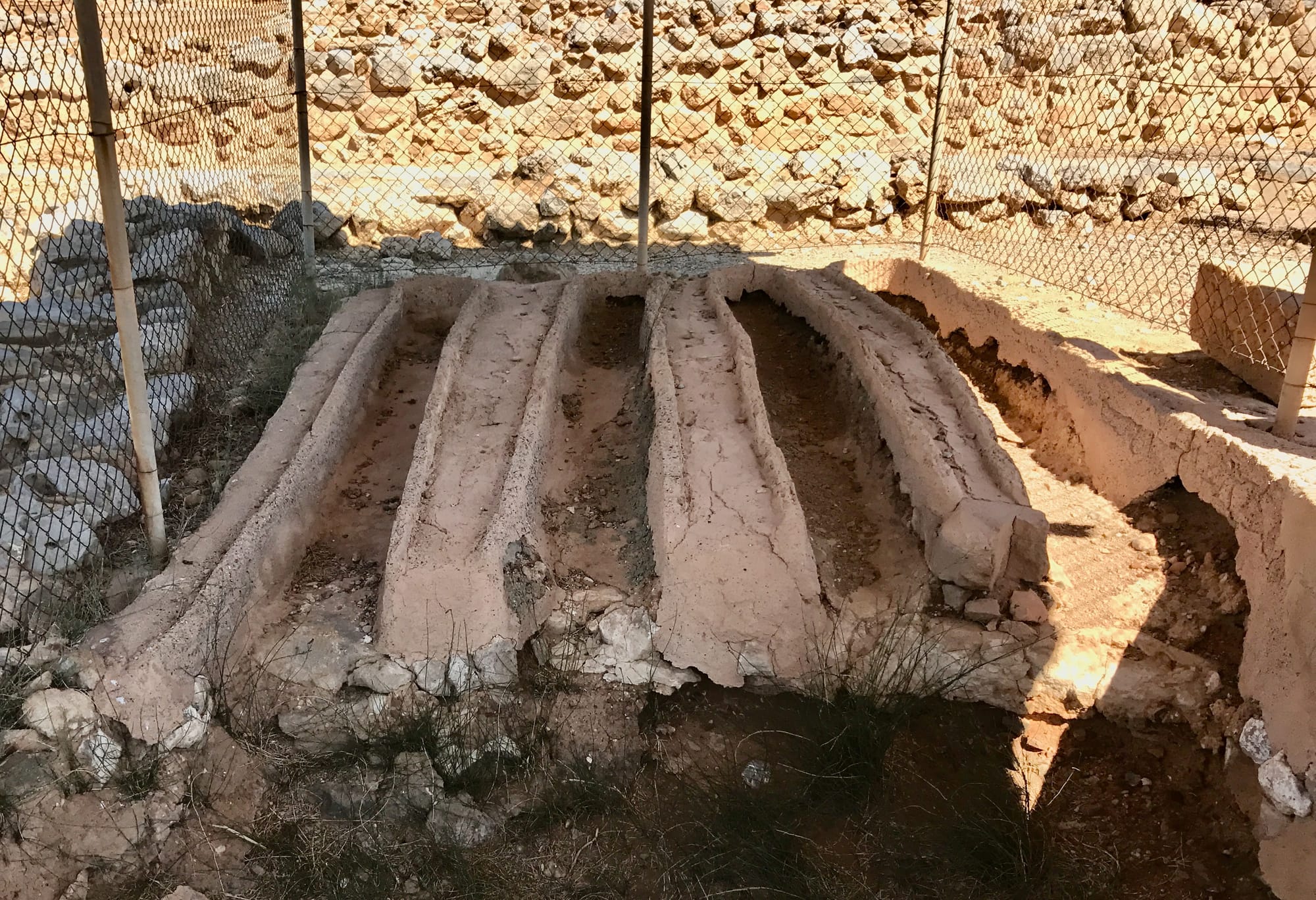
This kiln was presumably domed (now ruined) with discrete openings to control airflow. A wood fire pit is in the foreground from which heat would be drawn into the channels and out the back or top in a flew. It's also presumed the pottery was placed along the tops of the channels, covered by the dome, as no evidence of a grate over the channel, while hypothesized, has yet been found.
References
- A LM IA Ceramic Kiln in South-Central Crete: Function and Pottery Production, by JW Shaw et al, American School of Classical Studies at Athens, 2001
- From the Land of the Labyrinth: Minoan Crete, 3000-1100 B.C., Alexander S Onassis Public Benefit Foundation, Hellenic Ministry of Culture, and Archaeological Museums of Crete, 2008
- Heraklion Archeology Museum - Collections
- Minoan Pottery Kilns: A Re-Evaluation of Their Morphology, Technology, and Function, by Ioannis Pappas, SYMPOZJUM EGEJSKIE, PAPERS IN AEGEAN ARCHAEOLOGY VOL. 2 (2019)
- The Bronze Age Begins: The Ceramics Revolution of Early Minoan I and the New Forms of Wealth that Transformed Prehistoric Society, by Philip Betancourt, INSTAP Academic Press, 2008
- The History of Minoan Pottery, by Philip Betancourt, Princeton University Press, 1985
If you would like to learn more about Minoan pottery, I published a more complete pictorial overview on Electrum Magazine here.
